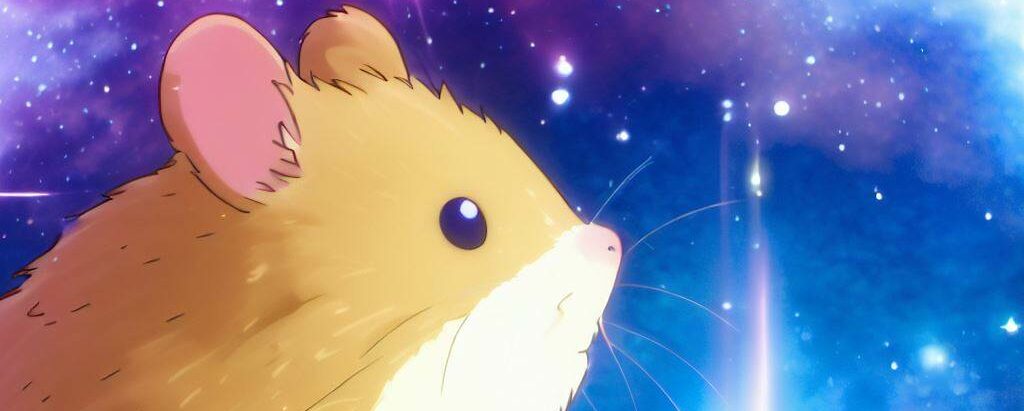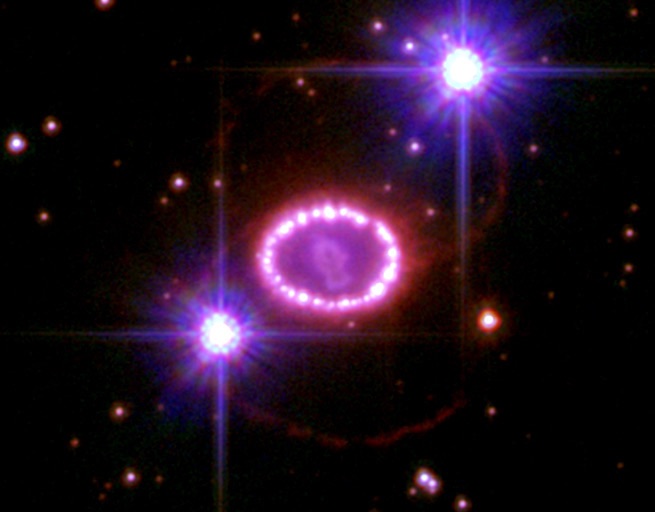This answer is for Alan. After my keynote talk at the Hartness House Workshop last night, he approached me with a really interesting question. What is the total mass of the neutrinos emitted by a core-collapse supernova (CCSN)?
This is a great question and a chance to do some estimating as well as to exercise some physics. First, let’s assume we just want to add up the mass of all neutrinos emitted by a CCSN and compare that total to the mass of something like the Earth, or the original mass of the exploded star.
The estimated number of neutrinos emitted by a typical CCSN is ![]() … that’s a one with 58 zeroes after it! Neutrinos carry away 99% of the explosion energy of a CCSN, and are the first thing to reach Earth especially for close-by supernovas (in or near our galaxy). This is because the shockwave of the explosion can take hours to reach the surface of the exploded star, and that it the moment the light is released. Neutrinos get out much earlier.
… that’s a one with 58 zeroes after it! Neutrinos carry away 99% of the explosion energy of a CCSN, and are the first thing to reach Earth especially for close-by supernovas (in or near our galaxy). This is because the shockwave of the explosion can take hours to reach the surface of the exploded star, and that it the moment the light is released. Neutrinos get out much earlier.
The modern best knowledge of the neutrino mass from direct experimentation comes from the KATRIN experiment at the Karlsruhe Institute of Technology in Germany. KATRIN finds that the mass of the neutrino is less than 0.45 electron-Volts, or eV. This is the BIGGEST this number can be.
KATRIN are using “particle physics units” for mass (AKA “natural units”), which are derived from Einstein’s famous relationship,
![]()
This equation puts mass and energy on equal footing, related by the speed of light. We first need to convert electron-Volts to a corresponding unit of energy in the International System of Units, or metres, kilograms, and seconds. The Joule is the appropriate unit, and ![]() . A Joule is a
. A Joule is a ![]() . Thus the resting mass-energy of a neutrino, at most, is
. Thus the resting mass-energy of a neutrino, at most, is ![]() .
.
We can convert KATRIN’s energy result to kilograms like so,
![]()
Now we just multiply that number by the total number of CCSN neutrinos to get ![]() . Wow! That is a big number. Let’s put it in some context.
. Wow! That is a big number. Let’s put it in some context.
The mass of a typical progenitor star for a CCSN is something like 15 solar masses (15 times the mass of our own sun, ![]() . The mass of the Earth is
. The mass of the Earth is ![]() , about 100,000 times smaller than the mass of the sun. The mass of the Moon is
, about 100,000 times smaller than the mass of the sun. The mass of the Moon is ![]() .
.
So, the mass of these neutrinos added up in this way equate to about 11% of the mass of the Moon, 0.1% of the mass of the Earth, and about a hundred-millionth of the mass of the original unexploded star. This is a HUGE amount of mass from a vast collection of very light objects.
But wait … there’s more!
We see from above that energy is mass. That’s the core idea at the heart of special relativity, Einstein’s theory of motion and the more complete general theory of motion that includes Galilean and Newtonian motion concepts as well. The neutrinos from a CCSN also have kinetic energy, energy of motion, and this represents additional mass-energy. A typical CCSN neutrino should have an energy of about 12 million electron-Volts, or 12MeV. Using this number instead, we find that the mass-energy of these neutrinos is ![]() , millions of times more than just the rest-mass consideration alone.
, millions of times more than just the rest-mass consideration alone.
That means the mass-energy in total is more like 300 million times the mass of the Moon, 4 million times the mass of the Earth, and 0.7% of the mass of the progenitor star.
Of course, converting this energy of motion into rest mass would be a real trick … it’s very hard to stop neutrinos. Even when a million-trillion neutrinos pass through a detector on Earth, we’re lucky to see a dozen or so interact in the experiment … a tiny fraction of the total number passing through the atoms in the material.
So, I think the most honest answer is the first one … take the resting mass of the neutrino (really, our best knowledge of the upper bound on that mass) and scale by the number of neutrinos. These are fun numbers either way!
References:
- SN1987a image: NASA, ESA, P. Challis, and R. Kirshner (Harvard-Smithsonian Center for Astrophysics)
- KATRIN result: https://www.science.org/doi/10.1126/science.adq9592
- Typical CCSN masses: https://academic.oup.com/mnras/article/506/1/781/6311135



